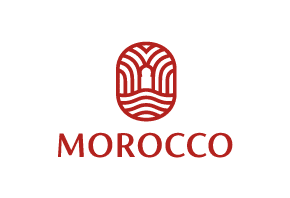Romagna’s piadina stretches italy’s quality-food lead over france

Traditional flat-bread gets PGI accreditation reserved for great food
The culinary pride of Romagna, the time-honoured piadina flat-bread has kept up Italy’s lead in Europe’s quality-food stakes.
The piadina, which dates back to Roman times, has been recognized by European officials for its unique origins and importance as a traditional fast food, receiving formal protection as a significant Italian product.
The European Protected Geographic Indication – IGP means the soft, rich flatbread that is the perfect base for cheese, ham or other sandwiches will now be protected from weak imitations and fakes. "This is an important achievement," said Italian Agricultural Minister Maurizio Martina. "Our heritage is increasingly unchallenged on a European and world stage," he added.
The IGP and DOP certifications protect some of Italy’s most iconic products as olive oil and the balsamic vinegar of the Emilia Romagna region.
And in Romagna itself there are hundreds of such delicacies…
Under EU law, products must abide by strict production regulations and geographical restrictions to be graded as genuine and worthy of an IGP or DOP seal. The IGP certification traces food specialties back to their geographical origin during at least one phase in production, but not to all phases like the DOP seal.
Italy is a leader in food designations, with more than 1,000 products on its registries. Excluding wines, as of December 31, 2012, Italy boasted 248 products sporting the EU’s coveted DOP, IGP, or Guaranteed Traditional Specialty (STG) seals.
France came in a distant second with 192 such products, followed by Spain with 161.
Italy had kept up its lead over the years with a fund of scrumptious entries. For example, three years ago, in 2011, a sheep’s cheese produced on the hillsides near Enna in Sicily earned an EU quality-food laurel.
Siena’s famed Ricciarelli biscuits, a slim lozenge-shaped dainty that morphed from an original curly creation by a Crusading knight impressed by an Arab sweetmeat, won a PGI label.
The ‘Patata di Bologna’ won a PDO. A fragrant white celery from Sperlonga received a PGI label aimed at keeping other celeries from posing as the aromatic product from the marshlands near the ancient coastal village between Rome and Naples which have for centuries produced the unique vegetable.
The ‘Mela di Valtellina’ won a PGI label to guard the strongly scented, firm-fleshed apple from the sub-Alpine valley. In January 2010 that Italian food glory, Neapolitan pizza, got a long-awaited TSG label.
Other recent additions have included Sicily’s ‘Pagnotta del Dittaino’ bread, with a PDO label; Roman suckling lamb, abbacchio romano, which earned a PGI label; and Modena’s balsamic vinegar, another PGI.
Valere Tjolle
Italian culinary glories like Parmigiano, buffalo mozzarella, mortadella, lardo di Colonnata, Ascoli olives, pesto sauce and Pachino plum tomatoes have been protected for some time.
Lesser-known goodies like Mt Etna prickly pears and Paestum artichokes swelled the ranks in 2009 along with two kinds of saffron, from San Gimignano and L’Aquila.
The list of delectable Italian regional food increases apace.
Valere Tjolle
Get the latest info: Top 100 Successful Sustainable Destinations to be unveiled HERE
 United Kingdom
United Kingdom United States
United States Asia Pacific
Asia Pacific












































Dozens fall ill in P&O Cruises ship outbreak
Turkish Airlines flight in emergency landing after pilot dies
Boy falls to death on cruise ship
Unexpected wave rocks cruise ship
Storm Lilian travel chaos as bank holiday flights cancelled